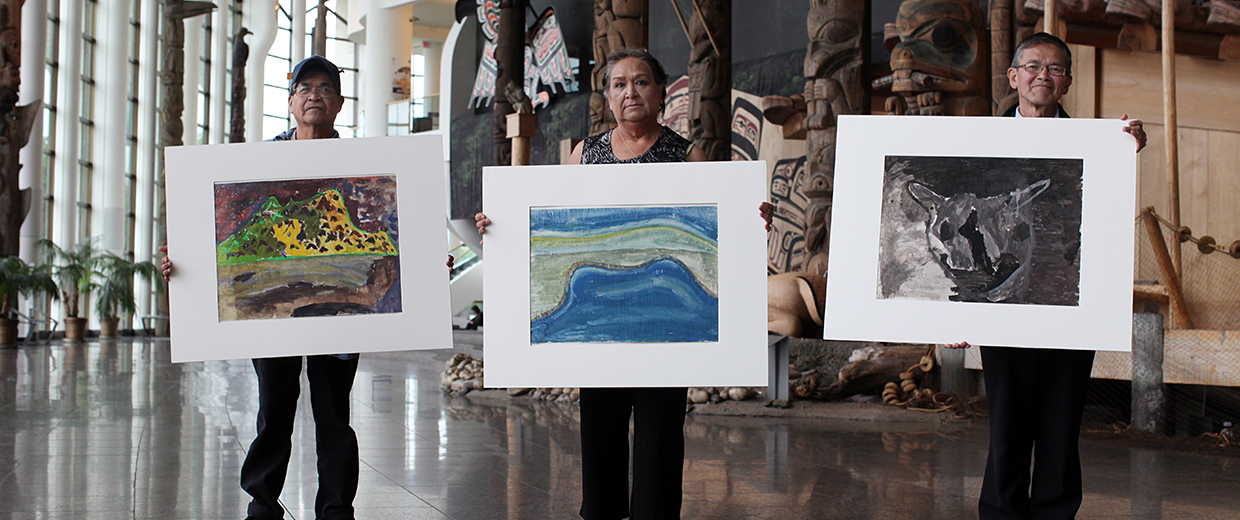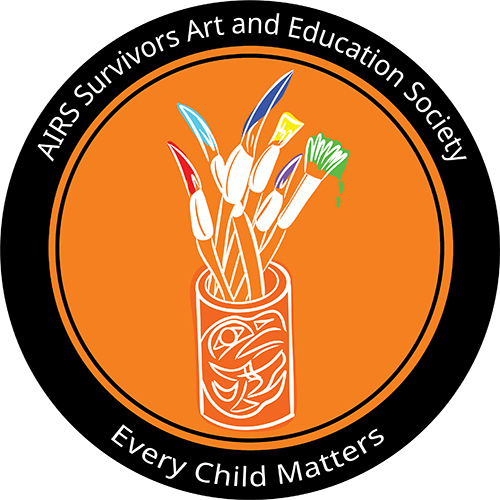Residential Schools, Art, and Reconciliation
The legacy of residential schools affects every Canadian. For over 100 years, an estimated 150,000 Indigenous children were placed in residential schools in a joint initiative between the federal government and Christian churches. The school system aimed to sever ties to community, language, culture and land to assimilate Indigenous nations into a Christian Canada. Many students at these schools were subjected to abuse. The intergenerational effects of this history are ongoing, as Survivors and Indigenous communities work to heal and renew ties to land, language and culture.

Photo: Survivors of Alberni Indian Residential School, left to right, Chuck August, Gina Laing, and Dennis Thomas of Port Alberni hold up their paintings at the Canadian Museum of History.
Photo by Dave Chan.
Students in this program will participate in a series of guided activities focusing on the powerful role of land in this history and in reconciliation efforts. This program was developed in partnership with Indigenous artist, master carver, filmmaker, and intergenerational Survivor Carey Newman (Hayalthkin’geme) and a group of Survivors from the Alberni Indian Residential School on Vancouver Island. It uses art created by these Survivors when they were students at the school in the 1950s and early 1960s as inspiration for reflections on Indigenous relationships to land, residential school history, colonialism, and one’s own place in Canada’s road to reconciliation.

Program details
Grades:
Ontario – Grades 7 to 12 (Only groups in these grades are eligible.)
Quebec – Secondary 1 to 5 (Only groups in these grades are eligible.)
Program can be adjusted to accommodate an adult audience.
Dates: September 8, 2025 to June 26, 2026
Time: Monday to Friday, 10 a.m., 12:15 p.m. and 2:30 p.m.
Duration: 90 Minutes
Group size: 35 (students and teachers)
Cost: This program is free for school groups with Museum admission.
